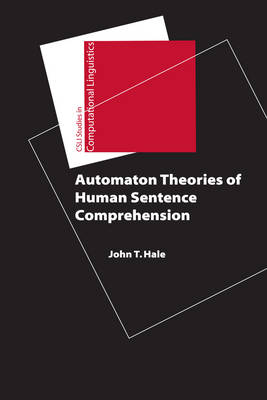Studies in Computational Linguistics (CSLI)
1 total work
By relating grammar to cognitive architecture, John T. Hale shows how incremental parsing works in models of perceptual processing and how specific learning rules might lead to frequency-sensitive preferences. Along the way, Hale reconsiders garden-pathing, the parallel/serial distinction, and information-theoretical complexity metrics, such as surprisal. This book is a...Read more
By relating grammar to cognitive architecture, John T. Hale shows how incremental parsing works in models of perceptual processing and how specific learning rules might lead to frequency-sensitive preferences. Along the way, Hale reconsiders garden-pathing, the parallel/serial distinction, and information-theoretical complexity metrics, such as surprisal. This book is a must for cognitive scientists of language.
